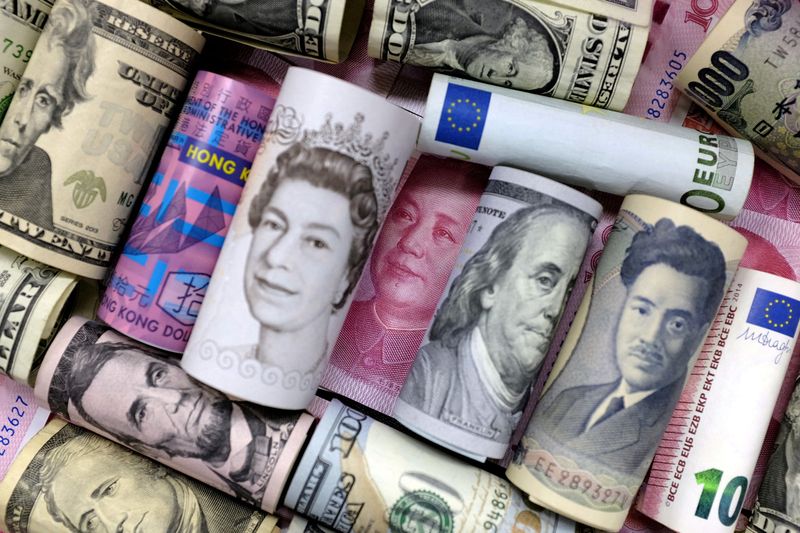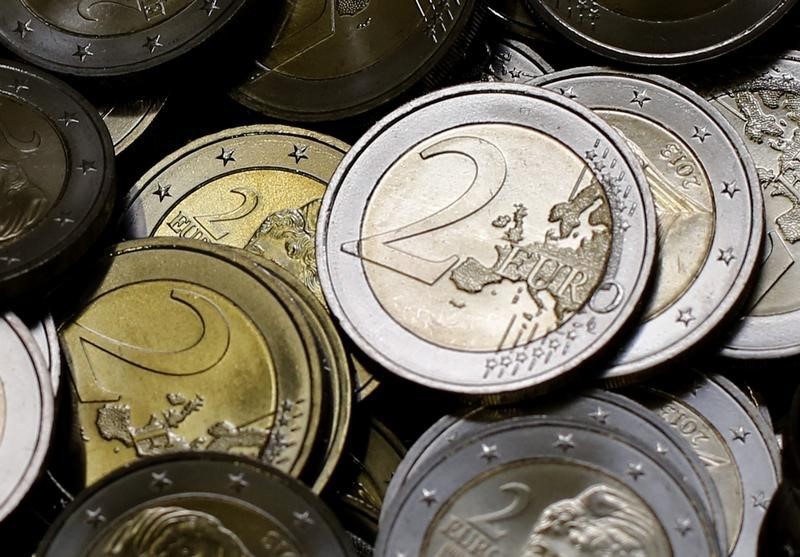By Rae Wee
SINGAPORE (Reuters) -The euro rose on Monday after the first round of early elections in France put the far right in pole position, albeit by a smaller margin than expected, while the yen struggled to break free from a near 38 year low.
Marine Le Pen’s far-right National Rally (RN) party won the first round of France’s parliamentary elections on Sunday, exit polls showed, although analysts noted the party won a smaller share of the vote than some polls initially expected.
The euro, which has fallen about 0.8% since President Emmanuel Macron called elections on June 9, was last 0.4% higher at $1.0756 after hitting two-week highs earlier in the session.
“They (RN) have actually performed slightly worse than expected,” said Carol Kong, currency strategist at Commonwealth Bank of Australia (OTC:).
“As a result, we saw the euro rise modestly in early Asian trading, just because we might see less fear of more expansionary and unsustainable fiscal policy if the far-right party were to do slightly worse.”
The euro’s rise sent the dollar slightly lower against a basket of currencies, although the dollar also wobbled Friday on data showing U.S. inflation cooling in May. This reinforced expectations that the Federal Reserve will cut interest rates later this year.
According to CME’s FedWatch tool, market prices now point to about a 63% chance of a Fed rate cut in September, compared to a 55% chance a month ago.
Against the dollar, the pound sterling
The New Zealand dollar rose 0.12% to $0.6098. The index was last down 0.11% at 105.61, having previously hit a one-week low.
“Should inflation continue to behave and incoming data remain in line with FOMC forecasts through the summer, the first 25 basis point cut remains on track as early as September,” said Michael Brown, senior research strategist at Pepperstone.
UNDER PRESSURE
The yen has struggled to gain ground against a broadly weaker dollar and was last down 0.1% at 161.03 per dollar, just a hair off a 37.5-year low at Friday at 161.27.
The Japanese currency had reversed early gains in the session after revised data showed the economy contracted more than initially reported in the first quarter.
Separate data on Monday also showed that sentiment among Japanese service sector entrepreneurs deteriorated in June as the lower yen pushed up costs, offsetting a big rise in factory confidence and pointing to weak consumption.
The yen has already fallen by more than 12% this year, as it continues to suffer from the large interest rate differentials between the US and Japan. The latest decline to the weaker side of 160 per dollar keeps investors on high alert for any US intervention. Japanese authorities to support the currency.
Elsewhere in Asia, the Chinese yuan – also a victim of large interest rate differentials with the US – fell a marginal 0.04% to 7.3204 per dollar in the offshore market.
The last was 7.2679 per dollar.
The Chinese currency got some support from a private sector survey that showed factory activity among smaller Chinese manufacturers grew at the fastest pace since 2021 thanks to foreign orders.
That came after official data over the weekend showed China’s manufacturing activity fell for a second month in June, while services activity fell to the lowest level in five months.

“June PMIs were mixed but suggest the recovery has lost some momentum over the past month,” economists at Capital Economics said.
“We think economic activity will hold up relatively well in the coming months. While the latest real estate stimulus has done little to boost new home sales, fiscal stimulus and strong exports should continue to support growth, at least in the short term .”


